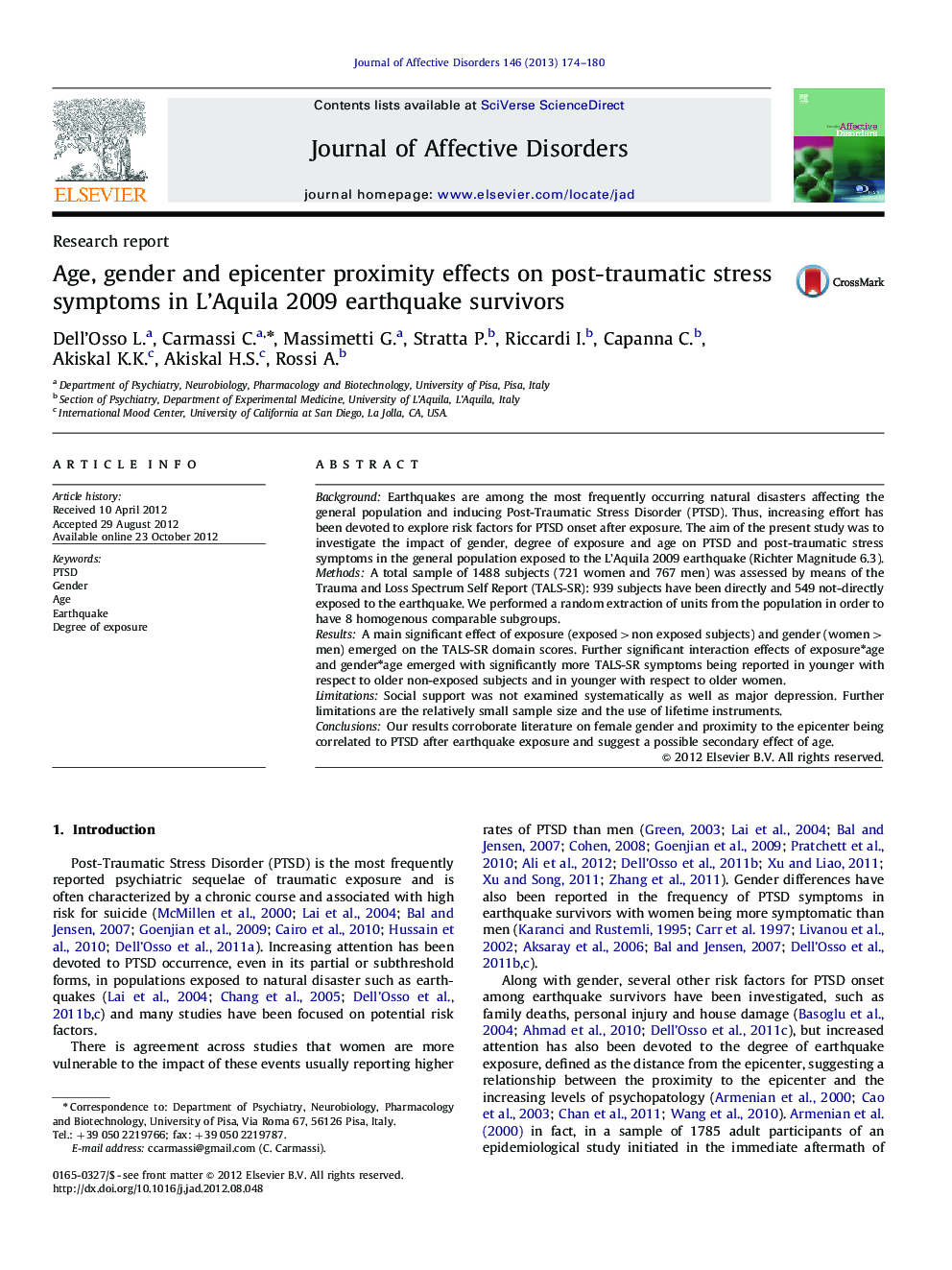| Article ID | Journal | Published Year | Pages | File Type |
|---|---|---|---|---|
| 4186261 | Journal of Affective Disorders | 2013 | 7 Pages |
BackgroundEarthquakes are among the most frequently occurring natural disasters affecting the general population and inducing Post-Traumatic Stress Disorder (PTSD). Thus, increasing effort has been devoted to explore risk factors for PTSD onset after exposure. The aim of the present study was to investigate the impact of gender, degree of exposure and age on PTSD and post-traumatic stress symptoms in the general population exposed to the L'Aquila 2009 earthquake (Richter Magnitude 6.3).MethodsA total sample of 1488 subjects (721 women and 767 men) was assessed by means of the Trauma and Loss Spectrum Self Report (TALS-SR): 939 subjects have been directly and 549 not-directly exposed to the earthquake. We performed a random extraction of units from the population in order to have 8 homogenous comparable subgroups.ResultsA main significant effect of exposure (exposed>non exposed subjects) and gender (women>men) emerged on the TALS-SR domain scores. Further significant interaction effects of exposure⁎age and gender⁎age emerged with significantly more TALS-SR symptoms being reported in younger with respect to older non-exposed subjects and in younger with respect to older women.LimitationsSocial support was not examined systematically as well as major depression. Further limitations are the relatively small sample size and the use of lifetime instruments.ConclusionsOur results corroborate literature on female gender and proximity to the epicenter being correlated to PTSD after earthquake exposure and suggest a possible secondary effect of age.
